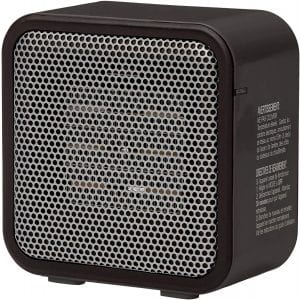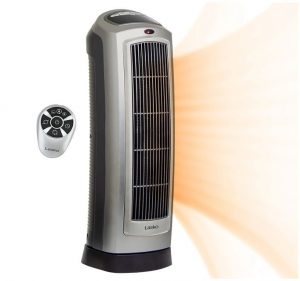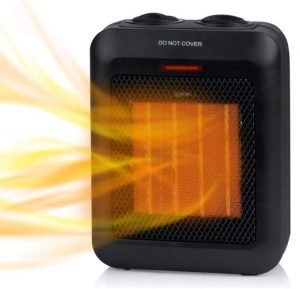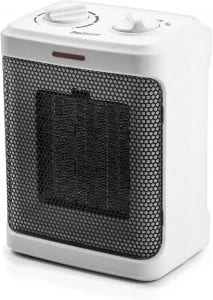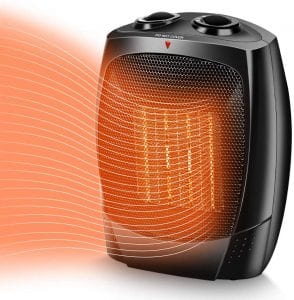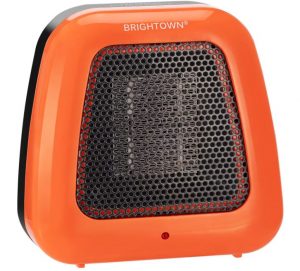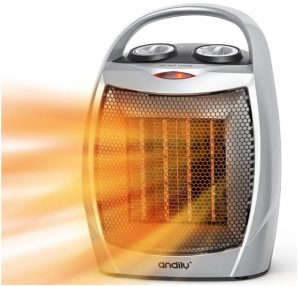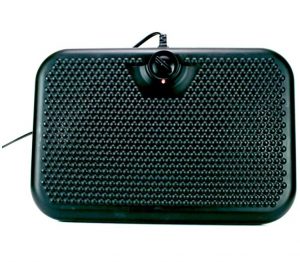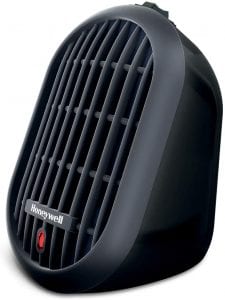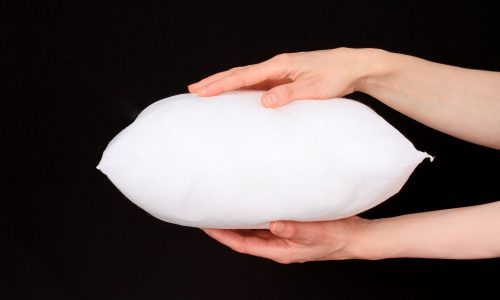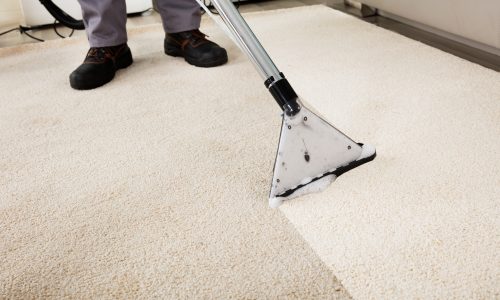The Best Desk Heater
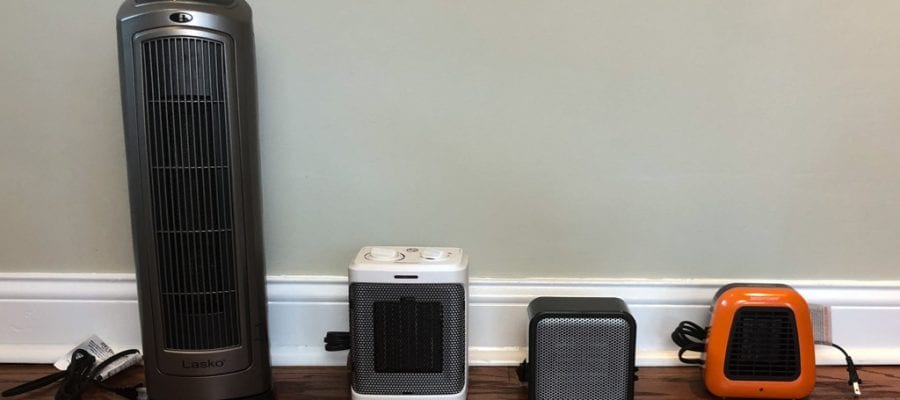
Our Review Process
Don't Waste Your Money is focused on helping you make the best purchasing decision. Our team of experts spends hundreds of hours analyzing, testing, and researching products so you don't have to. Learn more.
Our Picks For The Top Desk Heaters
- 1. AmazonBasics Corded Electric Compact Desk Heater
- 2. Lasko 755320 Ultra Quiet Fully Assembled Desk Heater
- 3. GiveBest Convection Energy Efficient Desk Heater
- 4. Pro Breeze Lightweight Traditional Desk Heater
- 5. TRUSTECH Wide Coverage Auto-Off Desk Heater
- 6. Brightown 400-Watt Low Wattage Mini Desk Heater
- 7. Andily Portable Ceramic Space & Desk Heater
- 8. Cozy TT Toasty Toes Adjustable Desk Heater
- 9. Honeywell HCE100B Bud Ceramic Personal Desk Heater
The small build of this ceramic heater makes it easy to slide into a corner of any room. It comes in four different colors to help you find the one that best blends with your existing decor. The built-in tip-over protection shuts the heater off if it's knocked over in any direction.
Fast HeatingThe ceramic coils in this desk heater heat up an area quickly and keep it warm as long as you need it to.
This desk heater has a strong fan that can heat up a fairly large space quickly, along with oscillation to extend its coverage. The nonskid base keeps it from sliding around even while it's oscillating. A remote lets you control operation even when you're across the room.
Great for Larger RoomsThis tower heater has a powerful fan and oscillates to provide warmth to a larger area than many space heaters.
The lightweight build of this desk heater makes it great for transporting back and forth to work. The outer surface doesn't become hot as the heater starts to do its work and tip-over protection keeps you safe if you accidentally bump it. It has both a low-heat and high-heat mode, as well as a fan that can blow cool air if you need it.
Handle for PortabilityThis heater includes a handle to make it easy to lift and take with you.
If you're looking for a small, compact desk heater that can keep you warm, this heater is worth considering. At high heat, wattage is 1500w, so it's fully capable of putting out enough heat to warm up a small area like an office. It has both overheat and tip-over protection for safety.
Small and LightweightThis ceramic heater is small and lightweight, making it easy to take with you to work or your favorite winter vacation spot.
Buying Guide
Working in a cold office is no fun. But if you share a space with others, you know it’s impossible to keep the temperature at a level that works for everyone’s personal comfort levels. Even if you work from home, you may find that you can save on utilities by warming up the small space where you work all day, every day, than heating your entire home.
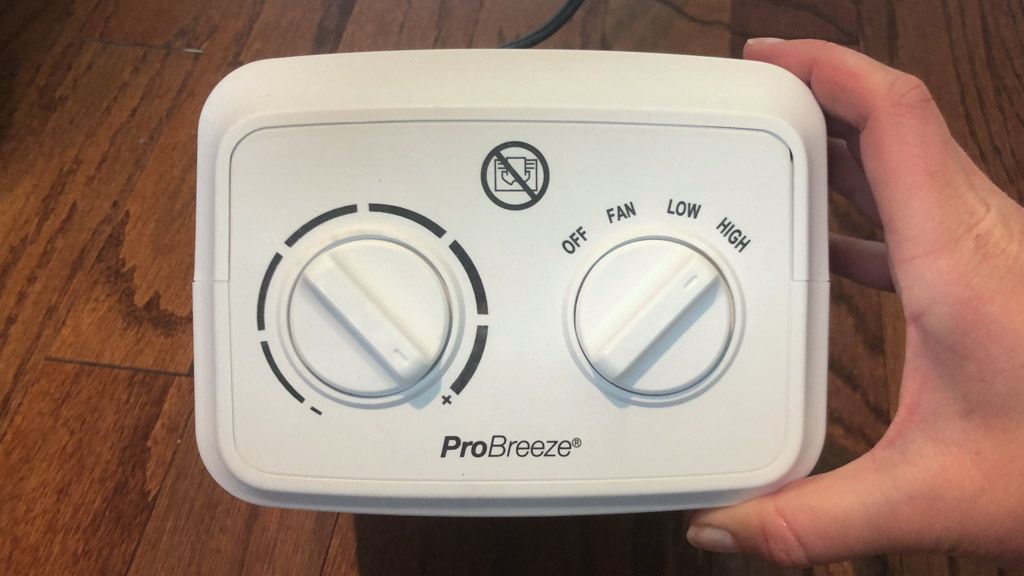
That’s where a space heater can come in. Typically, a small 1500-watt space heater can put out enough heat to keep you warm while you work. But some have a thermostat that allows you to set a precise temperature. The heater will only run long enough to get to that temperature, then shut off as the area starts to cool again. Many others will have the option of either low heat or high heat, requiring you to shut it on and off as you need it.
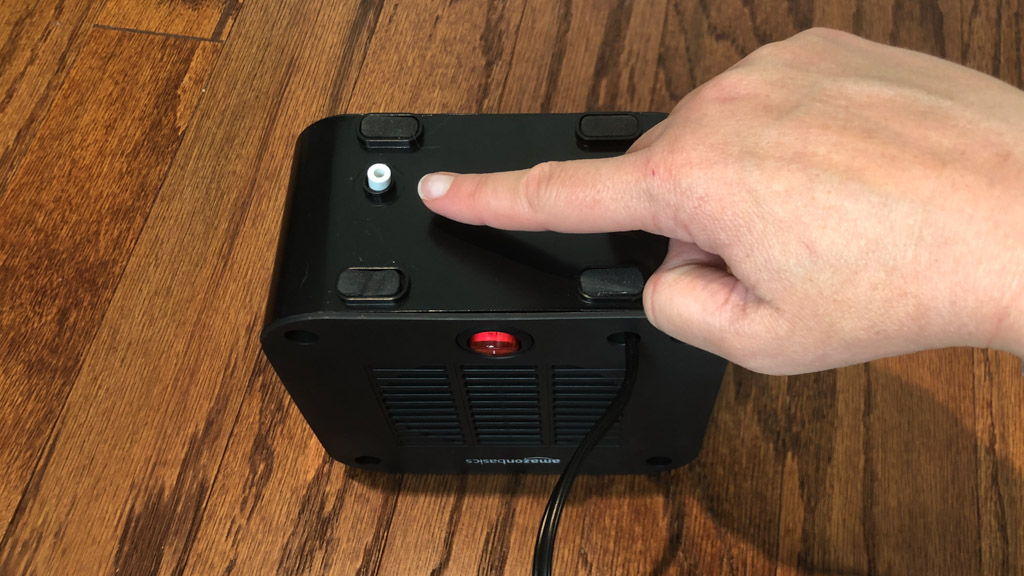
The size of a space heater is very important when you’re buying one for your office. A smaller one can slide under the desk, staying out of sight and out of the way while you work. If you need to take it back and forth from home and work, a smaller heater will come in handy.
Large, tower-style heaters have their uses, as well, though. If you have a larger office you need to heat, this model will be very useful. These heaters typically regulate the temperature for a large space, but you can buy tower heaters that oscillate to direct heat around a space rather than merely gradually raising the temperature in the room.
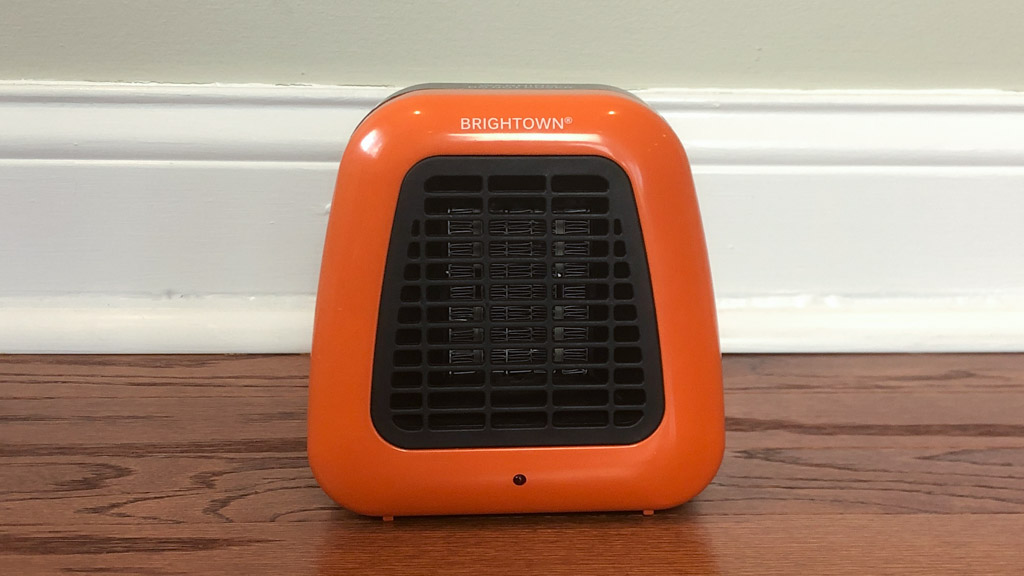
If you won’t have the heater directly beside you, consider the value of one that comes with a remote. You’ll be glad that you don’t have to cross the room every time you want to adjust the temperature. This is one feature that you’ll be happy you prioritized later.
Of all the features you’ll consider in a space heater, safety is the most important. Ceramic space heaters are best since they don’t emit carbon monoxide. They also heat up faster and are more durable. But you should also look for a heater that has tip-over protection, which shuts the heater off if you should accidentally upend it. Some space heaters also include overheat protection, powering the heater off if it gets too hot.
What to Look For
- If you work in an office building, make sure regulations allow you to use space heaters. Some property managers will confiscate them due to the safety hazard they pose.
- Manufacturers advise not to plug space heaters into extensions like surge protectors. That has led many to ask if smart plugs are an option. Since the manufacturers recommend plugging these heaters directly into the wall plug, this likely isn’t wise despite the security you’ll have in being able to turn off your heater remotely if you forget.
- Space heaters should always be set on the floor, even if you like the way the heat feels on your face or upper body. Also keep it well away from water and flammable objects like curtains and bedding.
- Pay close attention to the base of your heater. Even with tip-over protection, having a sturdy base will give you an extra layer of security.
- There are four types of space heaters. A convection heater is better for distributing the heat throughout the room, while a radiant heater is best for directing heat at a fixed spot. A fan-forced heater has a fan inside that pushes the air out into the room and a Micathermic heater combines radiant and convection heat.
- Heat output is crucial. A 1500-watt heater with ceramic coils will put out a fairly powerful amount of heat, along with warming up faster.
- There’s more to heating power than wattage. It’s important to choose the right size heater for your space. This will not only ensure you get the heat output you want, but it will also keep heating costs under control. As a general rule of thumb, you’ll need 10 watts of heating power for each square foot of floor space in a room.
- Other factors can influence a heater’s capabilities. Poor insulation will require a higher-wattage heater, for instance, as will a higher ceiling.
- Some heaters have difficulty keeping the heat safely inside the unit. If you have little ones around, make sure you choose one that has an outer casing that stays cool to the touch even while the heater is in use.
- Your heater should have safety netting in front of the area where the heat comes out. This may get hot even if the rest of the casing doesn’t, so take care around this area.
- Some heaters come with a timer that lets you set it to automatically shut off after a set number of hours. This will power it off even if you forget.
- Space heaters typically are controlled either by a knob or a digital display. If it’s digitally operated, make sure the panel is easy to use and the readout can be easily seen in the type of lighting it will be in.
- Noise level is an important consideration. An office heater needs to operate quietly enough that it doesn’t disrupt your calls or keep you from concentrating on the task at hand. One that has a quiet fanlike sound may even help you shut out everything and focus.
More to Explore
If your office has a battle of the sexes when it comes to temperature, it may be worth paying attention. Studies have shown a difference between male and female work performance related to room temperature. One study found that a woman’s cognitive ability improved as the temperature increased, while men saw better benefits at lower temperatures. The impact was small but notable, with women scoring 1.76 percent better on math problems for each 1.8-degree boost in temperature. This supports the general thinking that women tend to prefer warmer indoor climates than men. Interestingly, though, men tended to perform better on math problems at cooler temperatures, although the difference wasn’t as noticeable as it was in women.

